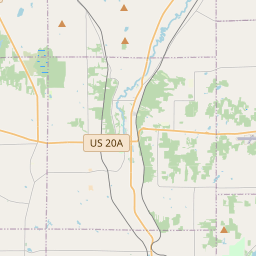Dedicated to the Men and Women of Wales
Historical marker location:
12345 Big Tree Road, Wales, New York
( Memorial is on Big Tree Road (U.S. 20A) 0.2 miles east of Four Rod Road, on the right when traveling east.)
Marker installed: 1963







© OpenStreetMap contributors
The first American museum was founded in New York City in 1792. It was called the American Museum, and it was located in what is now City Hall Park.
About Erie County
Erie County Timeline
Erie County, located in western New York state, has a rich and diverse history that dates back to ancient times. The area was originally inhabited by Indigenous peoples, primarily the Seneca Nation of Indians. In the 17th century, European explorers, traders, and missionaries arrived, with the French establishing a brief presence in the region. However, after the French and Indian War, control over the area shifted to the British.
In the late 18th century, following the American Revolution, the region that is now Erie County became part of the newly formed United States. The area experienced significant growth and development in the early 19th century, with the construction of the Erie Canal, a transformative project connecting the Great Lakes to the Hudson River, passing through the county. This led to the expansion of trade and commerce and attracted settlers from various parts of the country.
Throughout the 19th and early 20th centuries, Erie County continued to thrive, becoming a center for industry and innovation. Buffalo, the county's largest city and the second-largest city in New York, played a crucial role in the development of transportation and manufacturing. It was a major hub for the Great Lakes shipping industry and became known as the "Queen City of the Great Lakes." The county also saw advancements in education and culture, with the establishment of schools, libraries, and cultural institutions.
In recent decades, Erie County has faced economic challenges due to deindustrialization and changes in the global economy. However, efforts have been made to diversify the economy and promote revitalization. Today, the county is known for its natural beauty, with attractions such as Niagara Falls and the Buffalo waterfront. It is also home to a vibrant arts and cultural scene, as well as several universities and research institutions. Erie County continues to evolve, embracing its rich history while looking towards a promising future.
In the late 18th century, following the American Revolution, the region that is now Erie County became part of the newly formed United States. The area experienced significant growth and development in the early 19th century, with the construction of the Erie Canal, a transformative project connecting the Great Lakes to the Hudson River, passing through the county. This led to the expansion of trade and commerce and attracted settlers from various parts of the country.
Throughout the 19th and early 20th centuries, Erie County continued to thrive, becoming a center for industry and innovation. Buffalo, the county's largest city and the second-largest city in New York, played a crucial role in the development of transportation and manufacturing. It was a major hub for the Great Lakes shipping industry and became known as the "Queen City of the Great Lakes." The county also saw advancements in education and culture, with the establishment of schools, libraries, and cultural institutions.
In recent decades, Erie County has faced economic challenges due to deindustrialization and changes in the global economy. However, efforts have been made to diversify the economy and promote revitalization. Today, the county is known for its natural beauty, with attractions such as Niagara Falls and the Buffalo waterfront. It is also home to a vibrant arts and cultural scene, as well as several universities and research institutions. Erie County continues to evolve, embracing its rich history while looking towards a promising future.
Erie County Timeline
This timeline provides a condensed summary of the historical journey of Erie County, New York.
- 1679 - French explorer Robert de La Salle claims the area for France
- 1758 - British forces capture the area during the French and Indian War
- 1784 - The Sullivan Expedition destroys Native American villages in the area
- 1800 - The Holland Land Company purchases the land from the Seneca Nation
- 1810 - Buffalo becomes the first town in Erie County
- 1812-1814 - Erie County sees battles during the War of 1812
- 1821 - Erie County is officially established
- 1825 - Completion of the Erie Canal boosts the county's economy
- 1848 - Construction of the Buffalo and New York City Railroad begins
- 1851 - Buffalo's population exceeds 42,000 people
- 1872 - The Buffalo Zoo opens, becoming the third oldest zoo in the country
- 1884 - Construction of the Erie County Hall is completed
- 1901 - President William McKinley is assassinated in Buffalo
- 1938 - The opening of the Buffalo Niagara International Airport
- 1956 - Construction of the Niagara Thruway is completed
- 1964-1965 - Buffalo hosts the World's Fair, known as Expo '64
- 1970 - The construction of the Buffalo Metro Rail system begins
- 1984 - The Buffalo Bills reach their first Super Bowl
- 2006 - The implementation of the Buffalo-Niagara Riverkeeper organization